

April 6 – 12: “How do you create the perfect antagonist?”
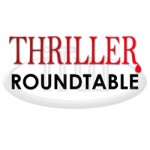 This week ITW Members Jean Heller, Mark Petry, David Walton, Simon Wood, Jean Harrington, Graham Smith, David Levien, Gary Haynes, Kevin Egan, Susan Sleeman and Alex Dolan will discuss the question on everyone’s mind: “How do you create the perfect antagonist?”
This week ITW Members Jean Heller, Mark Petry, David Walton, Simon Wood, Jean Harrington, Graham Smith, David Levien, Gary Haynes, Kevin Egan, Susan Sleeman and Alex Dolan will discuss the question on everyone’s mind: “How do you create the perfect antagonist?”
~~~~~
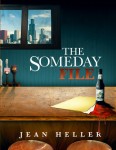 Most of Jean Heller’s career was as an investigative and projects reporter and editor in New York City, Washington, D.C. and St. Petersburg Florida. Her career as a novelist began in the 1990s with the publication of the thrillers, “Maximum Impact” and “Handyman” by St. Martin’s Press. Then life intervened and postponed her new book, “The Someday File,” to publication in late 2014. Jean has won the Worth Bingham Prize, the Polk Award, and is an eight-time Pulitzer Prize nominee.
Most of Jean Heller’s career was as an investigative and projects reporter and editor in New York City, Washington, D.C. and St. Petersburg Florida. Her career as a novelist began in the 1990s with the publication of the thrillers, “Maximum Impact” and “Handyman” by St. Martin’s Press. Then life intervened and postponed her new book, “The Someday File,” to publication in late 2014. Jean has won the Worth Bingham Prize, the Polk Award, and is an eight-time Pulitzer Prize nominee.
 Graham Smith is married with a young son. A time served joiner he has built bridges, houses and slated roofs to make ends meet. He now manages a busy hotel and wedding venue near Gretna Green, Scotland. An avid fan of crime fiction since being given one of Enid Blyton’s Famous Five books at the age of eight, he has also been a reviewer and interviewer for well-respected website Crimesquad.com for over five years.
Graham Smith is married with a young son. A time served joiner he has built bridges, houses and slated roofs to make ends meet. He now manages a busy hotel and wedding venue near Gretna Green, Scotland. An avid fan of crime fiction since being given one of Enid Blyton’s Famous Five books at the age of eight, he has also been a reviewer and interviewer for well-respected website Crimesquad.com for over five years.
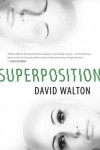 David Walton is the author of SUPERPOSITION, a quantum physics thriller with the same mind-bending, breathless action as films like INCEPTION and MINORITY REPORT. His other works include the Philip K. Dick Award-winning TERMINAL MIND, the historical fantasy QUINTESSENCE (Tor, 2013) and its sequel, QUINTESSENCE SKY. He’s also a Lockheed Martin engineer and the father of seven children.
David Walton is the author of SUPERPOSITION, a quantum physics thriller with the same mind-bending, breathless action as films like INCEPTION and MINORITY REPORT. His other works include the Philip K. Dick Award-winning TERMINAL MIND, the historical fantasy QUINTESSENCE (Tor, 2013) and its sequel, QUINTESSENCE SKY. He’s also a Lockheed Martin engineer and the father of seven children.
 Jean Harrington is the author of the tongue-in-cheek, Naples-set Murders by Design Mystery Series. The books feature an interior designer as amateur sleuth with a studly, tough-talking detective as her soft-at-heart love interest. The fifth book in the series, The Design Is Murder, was a finalist in the 2014 Florida Book Awards. A former English professor at Becker College in Worcester, Massachusetts, Jean now writes for the exploding field of electronic publishing.
Jean Harrington is the author of the tongue-in-cheek, Naples-set Murders by Design Mystery Series. The books feature an interior designer as amateur sleuth with a studly, tough-talking detective as her soft-at-heart love interest. The fifth book in the series, The Design Is Murder, was a finalist in the 2014 Florida Book Awards. A former English professor at Becker College in Worcester, Massachusetts, Jean now writes for the exploding field of electronic publishing.
 Mark Petry is a graduate of the University of Texas at Austin. He writes mystery and suspense thrillers. He’s all about the surprise ending. In his first novel, Class Dismissed, you had to wait till the last 2 pages to find out what really happened. In his latest, Secret Service, you’ll find out some secrets earlier on, but not all.
Mark Petry is a graduate of the University of Texas at Austin. He writes mystery and suspense thrillers. He’s all about the surprise ending. In his first novel, Class Dismissed, you had to wait till the last 2 pages to find out what really happened. In his latest, Secret Service, you’ll find out some secrets earlier on, but not all.
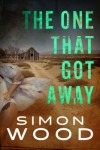 Simon Wood is a California transplant from England. He’s a former competitive racecar driver, a licensed pilot, an endurance cyclist and an occasional PI. He shares his world with his American wife, Julie. Their lives are dominated by a longhaired dachshund and four cats. He’s the Anthony Award winning author of Working Stiffs, Accidents Waiting to Happen, Paying the Piper, Terminated, Asking For Trouble, We All Fall Down and the Aidy Westlake series. His next thriller is THE ONE THAT GOT AWAY due out March ’15. He also writes horror under the pen name of Simon Janus.
Simon Wood is a California transplant from England. He’s a former competitive racecar driver, a licensed pilot, an endurance cyclist and an occasional PI. He shares his world with his American wife, Julie. Their lives are dominated by a longhaired dachshund and four cats. He’s the Anthony Award winning author of Working Stiffs, Accidents Waiting to Happen, Paying the Piper, Terminated, Asking For Trouble, We All Fall Down and the Aidy Westlake series. His next thriller is THE ONE THAT GOT AWAY due out March ’15. He also writes horror under the pen name of Simon Janus.
 David Levien is the author of the Frank Behr novels: Thirteen Million Dollar Pop, Where the Dead Lay, and City of the Sun. He has been nominated for the Edgar, Hammett, and Shamus Awards, and he is also a screenwriter (Rounders, Runaway Jury, Ocean’s 13) and director (Knockaround Guys, Solitary Man). He lives in Connecticut
David Levien is the author of the Frank Behr novels: Thirteen Million Dollar Pop, Where the Dead Lay, and City of the Sun. He has been nominated for the Edgar, Hammett, and Shamus Awards, and he is also a screenwriter (Rounders, Runaway Jury, Ocean’s 13) and director (Knockaround Guys, Solitary Man). He lives in Connecticut
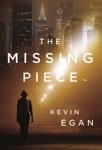 Kevin Egan is the author of seven novels, including his forthcoming The Missing Piece and Midnight, a Kirkus Best Book of 2013. He works in the iconic New York County Courthouse, which serves as the setting and inspiration for The Missing Piece. His short fiction has appeared in Alfred Hitchcock Mystery Magazine, Rosebud, and The Westchester Review. He graduated with a B.A. in English from Cornell University.
Kevin Egan is the author of seven novels, including his forthcoming The Missing Piece and Midnight, a Kirkus Best Book of 2013. He works in the iconic New York County Courthouse, which serves as the setting and inspiration for The Missing Piece. His short fiction has appeared in Alfred Hitchcock Mystery Magazine, Rosebud, and The Westchester Review. He graduated with a B.A. in English from Cornell University.
 Gary Haynes is the best-selling author of STATE OF HONOUR. STATE OF ATTACK is published by Harlequin (HarperCollins) on 7 February 2015. His books are described as: “Awesome adventures with countless twists and turns. Plots that seem as if they are lifted from today’s news on the threat of terrorism.” Gary “walked on the wild side” before deciding to study law at Warwick University and complete his postgraduate training at the College of Law. Gary writes cinematic-style, intelligent, fast-paced, action-packed espionage/political/military thrillers. He is writing a series of novels based on his main character, Tom Dupree, a special agent in the US Bureau of Diplomatic Security.
Gary Haynes is the best-selling author of STATE OF HONOUR. STATE OF ATTACK is published by Harlequin (HarperCollins) on 7 February 2015. His books are described as: “Awesome adventures with countless twists and turns. Plots that seem as if they are lifted from today’s news on the threat of terrorism.” Gary “walked on the wild side” before deciding to study law at Warwick University and complete his postgraduate training at the College of Law. Gary writes cinematic-style, intelligent, fast-paced, action-packed espionage/political/military thrillers. He is writing a series of novels based on his main character, Tom Dupree, a special agent in the US Bureau of Diplomatic Security.
 Alex Dolan was raised in Boston, lived in New York City, and currently resides in the San Francisco Bay Area. In addition to writing for several publications, he has recorded four music albums, and has a master’s degree in strategic communications from Columbia University. The Euthanist is his first novel.
Alex Dolan was raised in Boston, lived in New York City, and currently resides in the San Francisco Bay Area. In addition to writing for several publications, he has recorded four music albums, and has a master’s degree in strategic communications from Columbia University. The Euthanist is his first novel.
 Susan Sleeman is a best-selling author of inspirational and clean read romantic suspense books. Awards include Thread of Suspicion-2013 Romantic Times Reviewers Choice Best Book Award, No Way Out and The Christmas Witness, Daphne du Maurier Award for Excellence finalists. In addition to writing, Susan also hosts the popular website TheSuspenseZone.com. She currently lives in Oregon with her husband, but has lived in nine states. They have two daughters, a son-in-law, and an adorable grandson.
Susan Sleeman is a best-selling author of inspirational and clean read romantic suspense books. Awards include Thread of Suspicion-2013 Romantic Times Reviewers Choice Best Book Award, No Way Out and The Christmas Witness, Daphne du Maurier Award for Excellence finalists. In addition to writing, Susan also hosts the popular website TheSuspenseZone.com. She currently lives in Oregon with her husband, but has lived in nine states. They have two daughters, a son-in-law, and an adorable grandson.
- LAST GIRL MISSING with K.L. Murphy - July 25, 2024
- CHILD OF DUST with Yigal Zur - July 25, 2024
- THE RAVENWOOD CONSPIRACY with Michael Siverling - July 19, 2024
